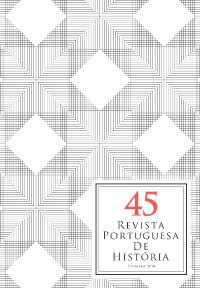Please use this identifier to cite or link to this item:
https://hdl.handle.net/10316.2/35365| Title: | Breve história da experiência jugoslava (1918-91) | Other Titles: | A short overview of the history of the Yugoslav experiment 1918-1991 | Authors: | Ristovitch, Milan | Keywords: | The Balkans;twentieth century;Yugoslavia;national question;monarchy;King Alexander;communism;Josip Broz-Tito;Balcãs;Século XX;Jugoslávia;questão nacional;rei Alexandre;república;comunismo;Iosip Broz Tito | Issue Date: | 2014 | Publisher: | Imprensa da Universidade de Coimbra | Abstract: | O texto é uma tentativa de num pequeno número de páginas apresentar os processos e fenómenos fundamentais dos sete decénios da existência do Estado jugoslavo. A Jugoslávia surgiu sob a designação de Reino dos Sérvios, Croatas e Eslovenos (até 1929) e foi resultado da I Guerra Mundial e da longa história da aspiração pela unificação destes povos próximos pelas origens, línguas e história. Durante o Século XX, teve os seguintes períodos:
– de 1918-1941, uma monarquia parlamentar que, a partir de 1929, teve vários anos de ditadura real, foi atingida por irresolúveis relações entre as suas nacionalidades, conflitos por soluções constituicionais, subdesenvolvimento económico e esteve rodeada de vizinhos com aspirações ao seu território;
– em Abril de 1941, o seu território foi ocupado ou anexado por parte da Alemanha nazista, Itália fascista e dos seus satélites do sudeste europeu (Hungria, Bulgária, Estado Independente da Croácia e Albânia). A ocupação trouxe o extermínio maciço de povos pela sua nacionalidade (judeus, sérvios e rons), provocou um levantamento armado de movimentos de resistência, mas também a guerra civil (entre o Movimento de Libertação Popular, partizan e sob o comando do PCJ, e as forças monárquicas, tchétniques, do general Mihailovitch); – saindo da guerra, em 1945, como a
força política e militar vencedora, os
comunistas jugoslavos abriram uma
nova fase na história jugoslava. Até
finais dos anos 40, houve uma versão
jugoslava da ditadura estalinista. Desde
o início dos anos 50 e depois do conflito
Tito-Estaline, uma versão jugoslava
do comunismo-socialismo (socialismo
autogestionário), aproximação do
Ocidente, criação do Movimento dos
Não-Alinhados, o culto de Tito, Estado
federal e modernização económica e
social. Os problemas nacionais e económicos
por resolver como a incapacidade
para uma profunda reforma democrática
do país provocaram o reforço
do nacionalismo e separatismo. Uma
crise que depois da morte, em 1980, de
Josip Broz Tito até início da década de
90, uma escalada da crise que conduziu
a federação jugoslava à desintegração
através duma sangrenta guerra civil. The text is an attempt to present the basic processes and phenomena related to the seven decades of existence of the Yugoslav state. Yugoslavia, which was created under the original name as the Kingdom of Serbs, Croats and Slovenes (1929 changed to the Kingdom of Yugoslavia) was a result of the First World War and the long history of striving for the unification of the South Slav peoples related by descent, language and history. Yugoslavia during the twentieth century passed through several phases; 1918-1941 as unstable parliamentary monarchy, which from 1929 went through several years of royal dictatorship, and was affected by the unresolved inter-ethnic relations, conflicts over constitutional solutions, economic underdevelopment and was surrounded by hostile neighbors with aspirations of its territory. From april1941 its territory was occupied and annexed by Nazi Germany, Fascist Italy and its southeast European satellites (Hungary, Bulgaria, the Independent State of Croatia, Albania). The occupation has brought massive destruction and suffering of the people due to their ethnicity (Jews, Serbs, Roma), or political beliefs. The occupation led to a widespread outbreak of an armed resistance movement against the occupying forces and their collaborators, but also opened the space for of the Civil War (between the National Liberation Movement-Partizans under the leadership of Communist and monarchist and nationalist forces of General Mihailovich). Emerging from the war as the winning political and military power Yugoslav communists 1945 opened a new phase of Yugoslav history (as:Yugoslav Democratic Federation, then Federal Peoples Republic of Yugoslavia and later as Socialist Federal Republic of Yugoslavia) until the end of the 1940s they built the Yugoslav version of the Stalinist dictatorship; since the beginning of the 1950s, and after the conflict between Tito and Stalin, begins the search for the Yugoslav version of communism-socialism (self-governing socialism), with the approaching the West, with an important role in the creation of the Non- Aligned Movement, the strong personal cult of Tito, building a federal structure of the state, with economic and social modernization. Unresolved national and economic problems as well as an unwillingness to further democratic reforming the country and its political system, led to the strengthening of nationalism, separatism, and the opening of the deep crisis, which after the death of lifetime president Josip Broz Tito in 1980, until the beginning of the 1990s escalated and led the Yugoslav federation to the collapse in the bloody civil war. |
URI: | https://hdl.handle.net/10316.2/35365 | ISSN: | 0870-4147 | DOI: | 10.14195/0870-4147_45_6 |
| Appears in Collections: | Revista Portuguesa de História |
Files in This Item:
| File | Description | Size | Format | |
|---|---|---|---|---|
| rph45_artigo8.pdf | 592.48 kB | Adobe PDF |  |
Items in DSpace are protected by copyright, with all rights reserved, unless otherwise indicated.
